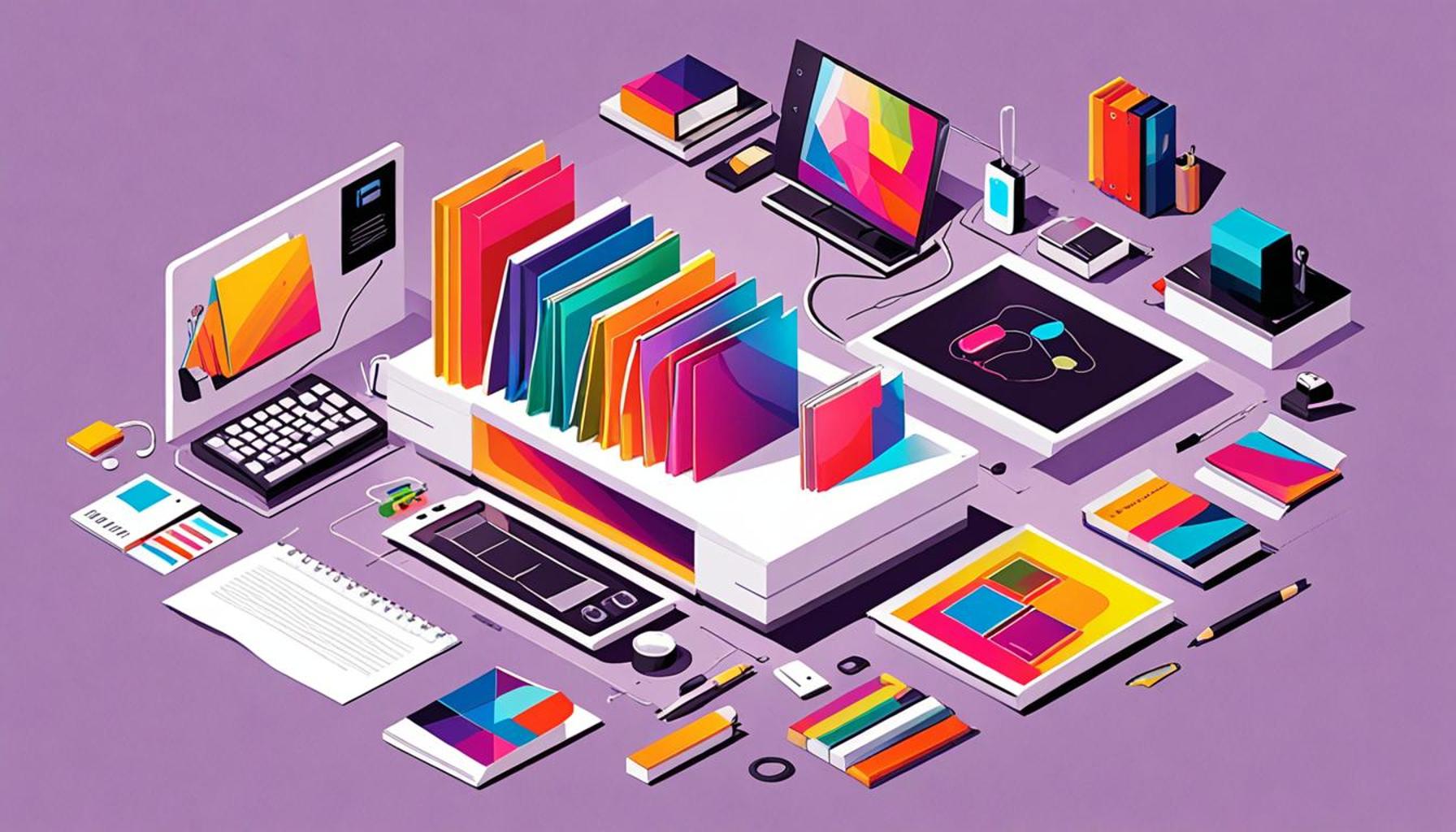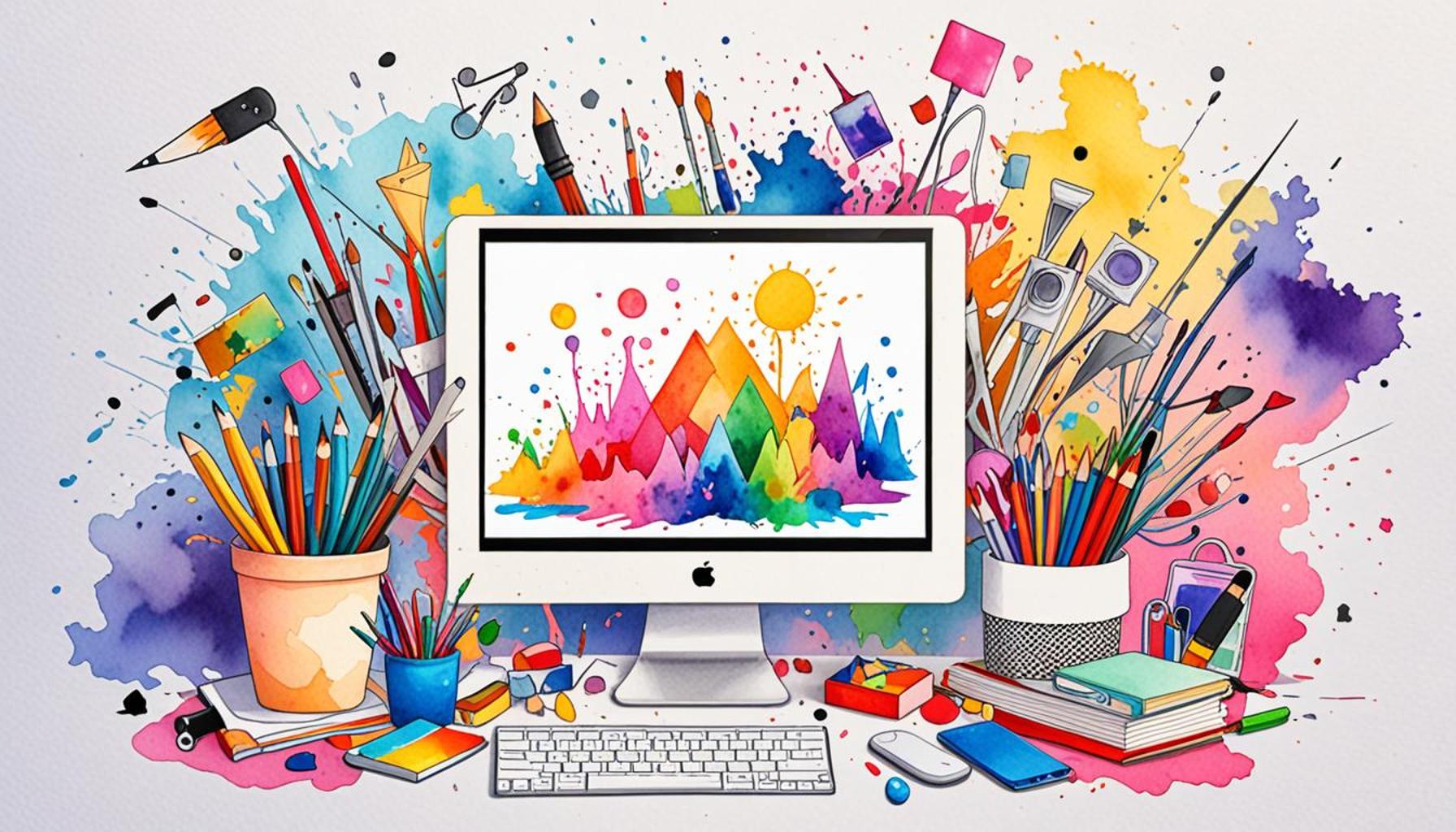Transforming Time Management: How Minimalist Digital Organization Can Increase Your Efficiency

Mastering Time Management in a Digital Age
Time management has transcended mere organization; it has become a pivotal skill essential for success in our fast-paced digital world. The constant barrage of notifications, emails, and messages can easily derail even the most disciplined individuals. Managing your time effectively requires not just self-discipline but also a strategic approach to digital organization that minimizes distractions and promotes productivity.
Minimalist digital organization emerges as a refreshing solution in this context. By simplifying your digital workspace, you can significantly enhance your focus and productivity. Here are some of the compelling benefits:
- Clarity: A decluttered digital space fosters clearer thinking, making it easier to navigate complex tasks and make swift decisions. Studies have shown that individuals working in organized environments report higher levels of satisfaction and efficiency.
- Efficiency: Streamlined processes can dramatically reduce the time spent on mundane, repetitive tasks. For instance, using tools like automation software can help in executing routine functions, freeing up time for more critical projects.
- Focus: With fewer visual and auditory distractions, you can achieve better concentration and deeper engagement with your tasks. This also leads to improved quality of work, as your attention remains undivided.
Many individuals and organizations are already reaping the benefits of minimalist digital organization by making several strategic changes:
- Adopting single applications that serve multiple functions—such as using an all-in-one project management tool that encompasses task tracking, team communication, and file sharing—consolidates workflows and minimizes the need to switch between different apps.
- Creating organized folders with intuitive naming conventions helps in finding documents swiftly, reducing the mental load required to remember where everything is stored. For instance, instead of saving documents with vague names, title them with clear, descriptive phrases that encompass their content.
- Utilizing digital tools that integrate smoothly, like combining calendars with email applications, can enhance overall workflow. This connectivity ensures that all your commitments and correspondence are organized in a cohesive manner.
Imagine a day where all your digital tools operate harmoniously, working for you instead of becoming obstacles to productivity. By embracing these strategies, you can transform your approach to time management and efficiency, laying the groundwork for not only personal success but also fostering a more productive environment within your organization. The culmination of these strategies may well pave the way for a more fulfilling and less stressful digital experience.
DISCOVER MORE: Click here to learn how minimalism can transform your life

Understanding the Importance of Digital Minimalism
In our fast-paced digital age, the tools and technology designed to enhance our productivity often become sources of distraction and overwhelm. The inconceivable volume of emails, instant messages, and digital notifications can clutter not only our desktops but also our minds. This sensory overload can lead to decreased focus and productivity, making minimalism not just an aesthetic choice but a crucial strategy for effective digital organization. Studies show that workers adopting a minimalist mindset are generally able to manage their time more efficiently, leading to improved performance and creativity.
To seamlessly integrate minimalism into your digital organization, embracing simplicity is fundamental. By strategically streamlining your digital workspace and removing superfluous items, you can enhance your focus, boost decision-making capabilities, and increase overall efficiency. Below are some effective strategies to help you create a minimalist digital organization:
- Digital Decluttering: Begin with a thorough audit of your various digital tools. Systematically review applications and files, removing anything that no longer serves a purpose. A clean interface not only decreases visual clutter but also mitigates the mental fatigue commonly linked to navigating a disorganized digital landscape. For example, you might start by cleaning out your email inbox, unsubscribing from unnecessary newsletters, and organizing important emails into categorized folders.
- Task Prioritization: Leverage digital tools designed for effective task prioritization. Implementing a simple priority matrix in your project management system allows you to distinguish critical tasks from the less important ones. Tools like Trello or Todoist can help you visualize your workload and ensure that vital deadlines are met with less stress, making it easier to focus on what drives the most value.
- Batching Similar Tasks: Group similar tasks and handle them during dedicated, focused sessions. For instance, set aside specific times each day for responding to emails, managing administrative tasks, or brainstorming creative ideas. This method minimizes context switching—where constant shifting between different tasks can hinder productivity—and promotes deeper engagement with your work.
Maintaining an organized digital environment requires consistency and commitment. Establishing clear routines that incorporate the strategies mentioned above can dramatically change the way you manage your workload, making your daily tasks feel more achievable and less overwhelming.
As you embark on this transformative journey, it’s essential to remember that the ultimate goal is to create a workspace that genuinely caters to your needs. Whether you decide to utilize a singular project management tool or implement disciplined time-blocking methods, embracing minimalist digital organization opens doors to increased creativity and collaboration. Think of your digital environment as a reflection of your work ethic—an orderly and efficient ecosystem enables you to thrive in your professional pursuits and beyond.
The advantages of minimalist digital organization extend far beyond immediate conveniences. By establishing a culture of efficiency within your personal workflow, you lay the groundwork for lasting changes in your perception of time management. This approach can be particularly advantageous for organizations where every individual’s productivity contributes significantly to the collective performance. Realizing the high impact of embracing these principles will not only enhance your personal productivity but can also inspire similar transformations within your team, propelling everyone toward shared goals.
| Category | Benefits |
|---|---|
| Streamlined Workflow | Achieve greater productivity by organizing tasks and removing digital clutter, allowing for focused work. |
| Improved Focus | Minimize distractions with a clear digital space, enabling sustained attention and effective completion of projects. |
| Time Savings | Use minimalism to reduce the time spent searching for files, emails, and documents, thus making every minute count. |
| Enhanced Collaboration | A structured digital environment fosters efficient collaboration with others, streamlining the sharing of information. |
| Stress Reduction | By eliminating unnecessary digital clutter, users can experience less stress, leading to a healthier work-life balance. |
The advantages listed above reflect the profound impact that a minimalist approach to digital organization can have on time management and efficiency. Each category highlights how strategic de-cluttering can promote a more productive and enjoyable work environment. With these benefits in mind, readers are encouraged to think critically about their own organizational strategies and how they might implement minimalist principles to enhance their efficiency. Discover the intricate relationship between digital spaces and productivity, and start innovating your time management today.
DISCOVER MORE: Click here to learn about minimalism’s impact on your finances
Embracing Tools and Techniques for Effective Minimalism
Embracing a minimalist digital organization approach involves not just decluttering your files but also optimizing your workflow through thoughtfully chosen tools. The right technology can be a game-changer in streamlining your processes and fostering productivity. Whether you are a freelancer, student, or part of a larger corporate environment, investing time in familiarizing yourself with digital tools designed for minimalism can yield significant improvements in efficiency.
A key component of achieving efficiency is the effective use of cloud storage solutions like Google Drive or Dropbox. By shifting your documents from local storage to the cloud, you can not only free up digital space but also create a centralized location for easy access. These platforms allow for better organization through folder systems, shared access with teammates, and real-time collaboration—all of which are essential in today’s remote work climate. Collaboration tools like Slack or Microsoft Teams also facilitate streamlined communication, reducing the clutter associated with lengthy email threads.
Additionally, consider using digital note-taking applications such as Evernote or Notion. These platforms provide a minimalist approach to gathering thoughts, tasks, and ideas in visually organized layouts. Users can create categorized notes, embed links, or even collaborate in real-time. The ease of retrieving information keeps cognitive load low, enabling you to focus on actionable insights rather than sifting through scattered documents.
Automation is another powerful ally in your quest for minimalism. By utilizing tools like Zapier or IFTTT (If This Then That), you can automate repetitive tasks, reducing the time spent on mundane activities. For example, automatically saving email attachments to your cloud storage or setting reminders for deadlines can help you maintain order in your digital life while ensuring that nothing slips through the cracks.
Time tracking applications such as Toggl or Clockify can also play a pivotal role in your efficiency revolution. By gaining insights into how your time is spent, you can better identify areas for improvement and streamline your efforts. These tools can help you spot distractions and inefficiencies while allowing for better forecasting of your work hours, making it easier to allocate time more effectively across projects.
Creating a Routine That Supports Minimalism
Transitioning to a minimalist digital organization requires not only the right tools but also the establishment of a supportive routine. This can include dedicated times for digital maintenance, such as a weekly review session to assess your digital workspace and adjust as necessary. Allocate time for sorting through files, updating project statuses, and establishing priorities for the week ahead. Regular maintenance prevents accumulation of clutter and ensures you are consistently operating at peak efficiency.
Moreover, integrating mindfulness into your workflow can amplify the benefits of minimalist digital organization. Techniques such as mindful task management encourage you to stay present and focused on single tasks, rather than multitasking, which can lead to a decline in efficiency. Practices like the Pomodoro Technique, where work is segmented into focused intervals followed by short breaks, can further enhance concentration while steering clear of digital distractions.
Lastly, it’s essential to approach this transformation with a mindset of experimentation and flexibility. Processes that work for one person may not work for another; thus, being open to adjusting your tools and techniques is part of the journey. A commitment to evolve your digital organization practices over time will not only optimize efficiency but will also lead to a more intentional, manageable approach to your overall time management.
Dive Deeper: Click here to learn more
Conclusion: A New Era of Time Management Through Minimalism
In today’s fast-paced world, transforming time management through minimalist digital organization is not just a trend; it is a necessity. As we have explored, adopting minimalist principles allows individuals and teams to eliminate distractions, streamline workflows, and heighten productivity. By utilizing digital tools such as cloud storage, collaboration platforms, and automation software, you pave the way for a more organized and efficient work environment. These solutions empower users to reclaim their valuable time and focus on what truly matters, be it creative projects, collaborative tasks, or personal endeavors.
Moreover, establishing a routine that honors the principles of minimalism fortifies this transformation. Regular digital maintenance, coupled with mindful task management techniques, encourages individuals to remain aware and proactive in their approach to time management. This harmonious blend of technology and mindfulness not only enhances individual efficiency but also fosters a more cohesive and productive work atmosphere.
As you embark on your journey toward minimalism, remember that the key lies in experimentation and adaptability. The tools and techniques that resonate best with you may differ from others, making a personalized approach essential. By committing to evolving your digital organizational practices, you will not only boost your efficiency but also cultivate a more intentional relationship with your time and work. The future of productivity is here, and it starts with embracing the power of minimalist digital organization.


